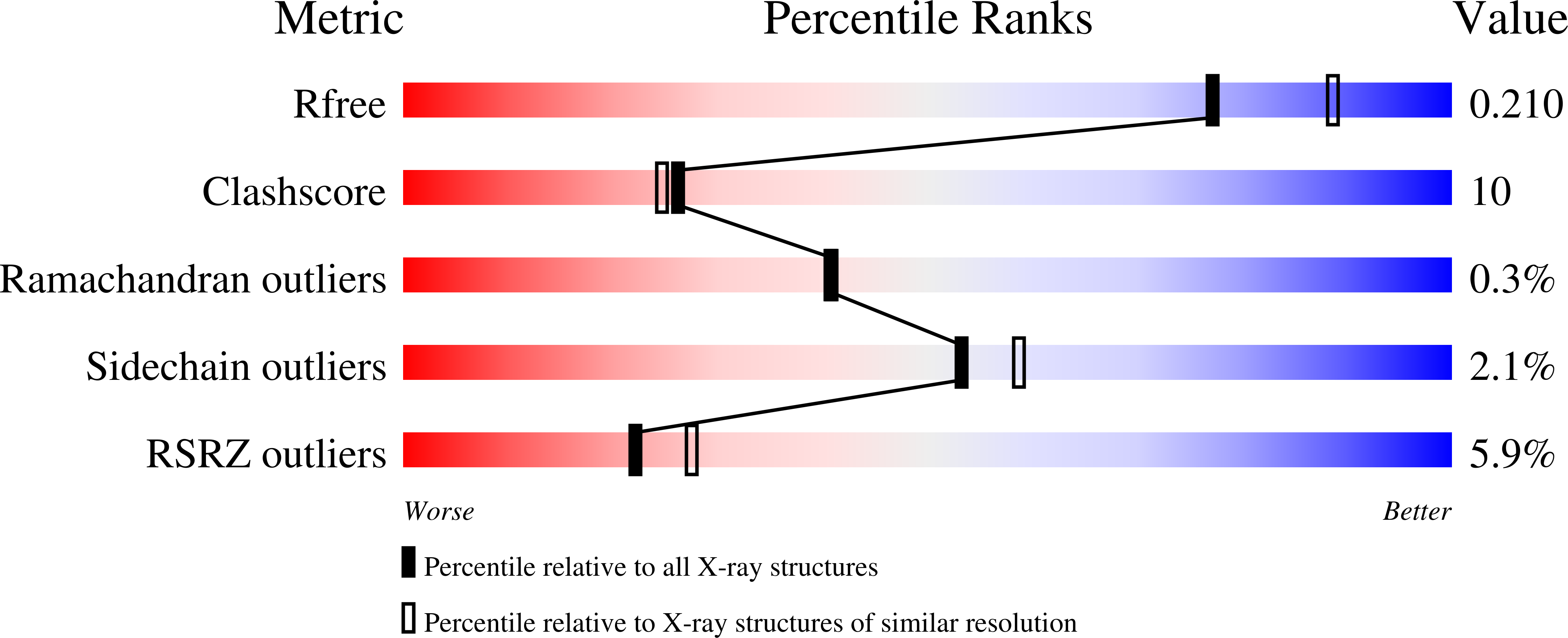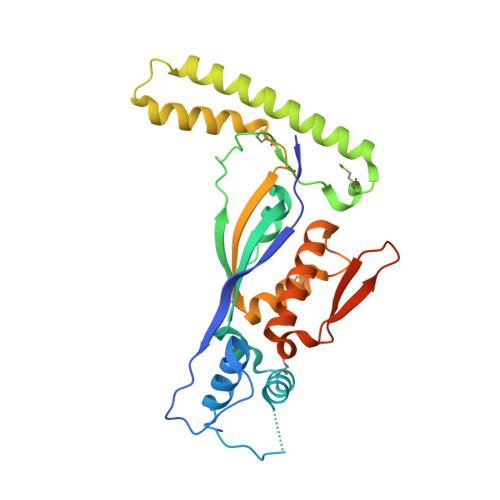NADP+ expels both the co-factor and a substrate analog from the Mycobacterium tuberculosis ThyX active site: opportunities for anti-bacterial drug design.
Sampathkumar, P., Turley, S., Sibley, C.H., Hol, W.G.(2006) J Mol Biol 360: 1-6
- PubMed: 16730023
- DOI: https://doi.org/10.1016/j.jmb.2006.04.061
- Primary Citation of Related Structures:
2GQ2 - PubMed Abstract:
The novel flavin-dependent thymidylate synthase, ThyX, is absent in humans but several pathogenic bacteria depend exclusively on ThyX activity to synthesize thymidylate. Reduction of the enzyme-bound FAD by NADPH is suggested to be the critical first step in ThyX catalysis. We soaked Mycobacterium tuberculosis ThyX-FAD-BrdUMP ternary complex crystals in a solution containing NADP+ to gain structural insights into the reductive step of the catalytic cycle. Surprisingly, the NADP+ displaced both FAD and BrdUMP from the active site. In the resultant ThyX-NADP+ binary complex, the AMP moiety is bound in a deep pocket similar to that of the same moiety of FAD in the ternary complex, while the nicotinamide part of NADP+ is engaged in a limited number of contacts with ThyX. The additional 2'-phosphate group attached to the AMP ribose of NADP+ could be accommodated with minor rearrangement of water molecules. The newly introduced 2'-phosphate groups are engaged in water-mediated interactions across the non-crystallographic 2-fold axis of the ThyX tetramer, suggesting possibilities for design of high-affinity bivalent inhibitors of this intriguing enzyme.
Organizational Affiliation:
Howard Hughes Medical Institute, University of Washington, Seattle, WA 98195, USA.




















